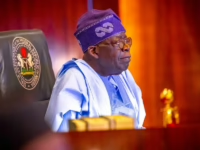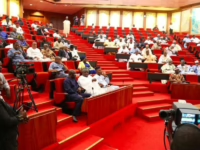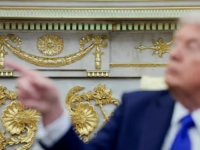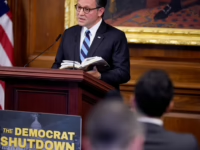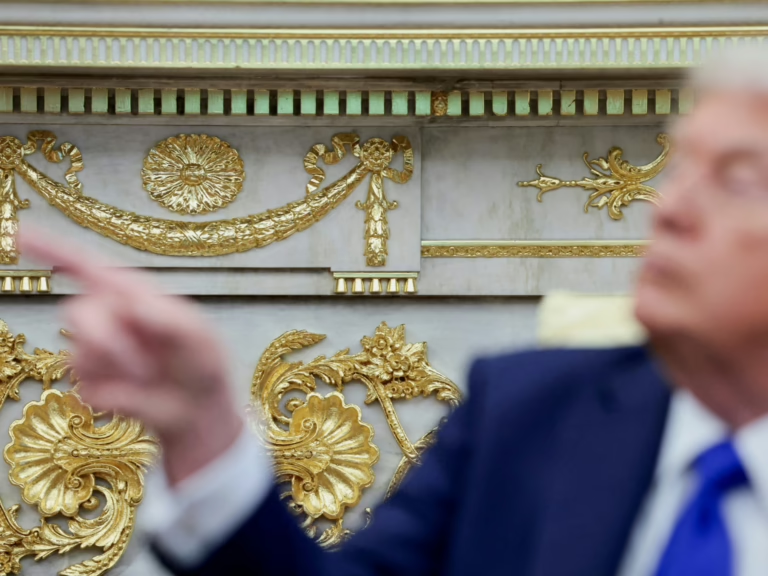Gold prices have surged to an unprecedented peak, surpassing $4,000 per troy ounce (31.1g), as investors worldwide increasingly turn to this precious metal over the past year.
On Tuesday, gold futures-agreements to buy or sell gold at a predetermined price-crossed this significant milestone, followed by the spot gold price reaching the same level on Wednesday afternoon in Asian markets.
Traditionally, gold has been regarded as a reliable “safe haven” during periods of economic instability due to its tangible nature and storability.
However, experts suggest that the recent price rally signals a broader transformation: gold is evolving into a versatile “all-weather asset” suitable for various market conditions.
How Has Gold’s Price Evolved in 2025?
Since the beginning of 2025, gold has experienced an extraordinary increase of over 50%, marking one of the most remarkable runs in its history.
A significant catalyst behind this surge has been the return of Donald Trump to the U.S. presidency earlier this year.
Gold prices spiked notably in April amid the onset of a global trade conflict initiated by Trump, and surged again in August when he publicly challenged the independence of the Federal Reserve, the U.S. central bank.
Amid such unpredictability, investors have sought refuge in more stable assets like gold.
Yet, Trump’s policies are not the sole contributors to gold’s ascent. Recent events such as Japan’s leadership election, the U.S. government shutdown, and escalating political turmoil in France following Prime Minister Sebastien Lecornu’s resignation have also played pivotal roles, according to market analysts.
What Factors Sparked This Week’s Price Jump?
Kyle Rodda, a senior market analyst at Capital.com in Australia, highlighted the unexpected victory of Sanae Takaichi in Japan’s Liberal Democratic Party leadership race as a key driver behind the recent price surge.
Takaichi, poised to become Japan’s next prime minister-the world’s fourth-largest economy-advocates for aggressive fiscal stimulus, including deficit spending, tax reductions, and direct payments to households aimed at boosting economic growth.
Her win unsettled markets, causing the yen-a currency also considered a “safe haven” by some investors-to fall to a 13-month low on Tuesday, as reported by Reuters. Consequently, gold emerged as a preferred alternative.
Rodda described the current rally as part of a “run it hot” trading strategy, reflecting heightened market activity and risk appetite.
How Does This Year’s Gold Rally Compare to Previous Years?
The magnitude of this year’s price increase is striking.
Gold typically appreciates during uncertain times, stabilizes, and then climbs again when economic unpredictability resurfaces.
Between mid-2020 and early 2024, gold prices oscillated between $1,600 and just over $2,100 per ounce, showing moderate fluctuations.
In 2024, gold prices rose by roughly 30%, but this growth has been dwarfed by the steep upward curve observed in the first nine months of 2025.
Has Gold Experienced Similar Surges Before?
Although this year’s peak is historic, gold has undergone significant rallies in the past.
One of the most notable surges occurred in the 1970s after President Richard Nixon ended the dollar’s convertibility into gold.
Since World War II, gold had been fixed at $35 an ounce, but the Nixon administration deemed the U.S. dollar overvalued due to excessive foreign aid, military expenditures, and overseas investments, according to the U.S. State Department’s Office of the Historian.
Between 1971 and 1980, gold prices skyrocketed from $35 to $850 per ounce.
The decade was marked by economic turmoil, including the 1973 oil embargo, the 1979 Soviet invasion of Afghanistan, and the Iran hostage crisis, all of which fueled gold’s ascent.
What Sets This Gold Rally Apart?
Unlike previous periods when gold’s rise often coincided with stock market declines, this time gold is climbing alongside U.S. equities.
For instance, as gold hit record highs this week, major indices like the S&P 500 and Nasdaq Composite also reached all-time peaks on Monday, despite concerns over the U.S. government shutdown, as reported by CNBC.
Although these indices have since retreated, the overall trend suggests gold is increasingly regarded as a primary investment choice.
Tim Waterer, chief market analyst at KCM Trade in Australia, explained that gold now functions as an “all-occasion asset,” capable of appreciating during both risk-averse and risk-seeking phases, while continuing to serve as a hedge against geopolitical uncertainties in the U.S. and globally.
“Gold is no longer just a defensive play; it has broadened its appeal as an investment vehicle given today’s market dynamics,” Waterer noted.
What Does This Mean for Trump’s Influence?
Both Waterer and Rodda emphasized that while Trump’s policies have significantly influenced gold’s long-term price trajectory, he represents only one of several factors at play.
Rodda described gold as a “five-factor” trade, with investors balancing Japan’s fiscal strategies and mounting government debt against geopolitical tensions, U.S. trade policies, challenges to the Federal Reserve, and expectations of future interest rate cuts.
“Trump’s trade and fiscal policies, along with his criticisms of the Fed, have certainly impacted gold prices, but it’s an oversimplification to attribute the rally solely to him. Multiple elements are driving this trend,” Rodda explained.




